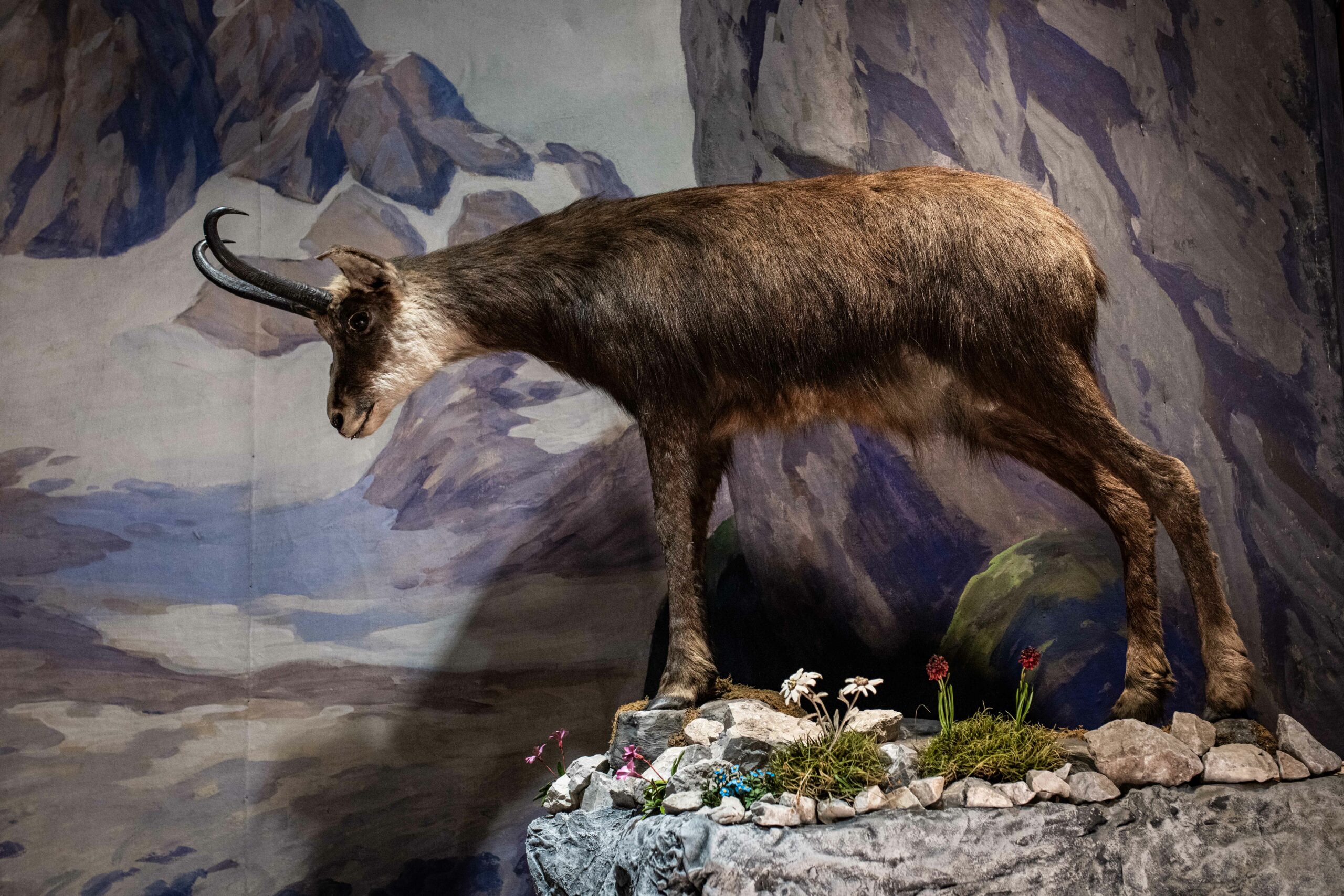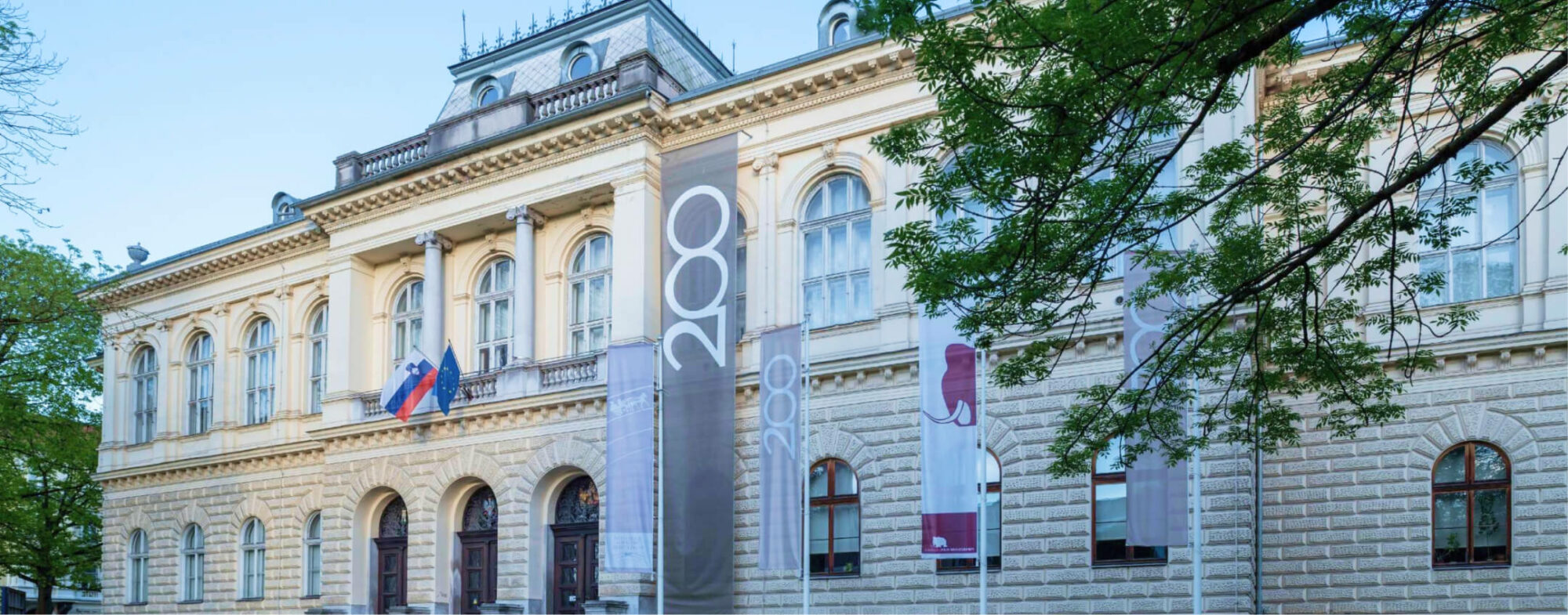Carefully observe life in the Alps above the forest line. A couple of chamois pry from the rock. In the summer, these highly skilled climbers keep close to the open rocky slopes high in the mountains above the forest line, while in the winter they descend towards the lowlands. We can see the alpine marmot below them. This representative of the squirrel family became extinct in our country at the end of the Ice Age. In the second half of the 20th century, it was reintroduced to the Slovenian Alps from Austria, Italy and Switzerland. The zone of dwarf pine and larch forests is inhabited by the black grouse. In early spring, males pay court to females with a dance display, during which they show off their unfamiliar tails, coo, blow and hiss, while the unobtrusively coloured females watch them from the side.
Now try to find a bird that is perfectly adapted to long winters with the landscape covered in snow. This is the ptarmigan. During the winter, both sexes have white feathers. Only some of their tail feathers are black. They display a red fold of skin above their eyes – a comb. In the summer, they become darker, with only the wings and belly retaining some whiteness. The male is distinguished from the female by a dark line running from the beak over the eyes.

The Alpine Diorama. Photo: David Kunc
The chamois is a social species. The largest herds are formed by females with cubs. Adult males socialize with each other, while old males are usually loners. Herds of females are only joined by males during mating, which takes place at the beginning of winter. At this time, the males chase each other and fight for the females. Photo: David Kunc
The ring ouzel is a close relative of the blackbird. In the spring, it returns from its North African wintering grounds to European high-mountain breeding grounds. In this period, the males sing loudly from the tops of spruces and larches, whereas during nesting and later, they go quiet and are rarely seen. In autumn, they descend into valleys and then return to North Africa in small flocks. Photo: David Kunc
Female black grouses are caring mothers. They build their nests in safe shelters under dense shrubs. Both its feathers and the eggs are cryptically-coloured, protecting them from predators. When the chicks hatch, they immediately leave the nest and start searching for food on their own. The family spends the summer together, then breaks up in the fall. Photo: David Kunc
The wallcreeper was discovered in the middle of the 18th century by the well-known biologist and doctor Joannes A. Scopoli from Idrija. He reported his find to Carl Linnaeus and sent him a taxidermic specimen. Linnaeus was impressed by the letter and classified the bird as Certhia muraria from Carniola in 1766. Photo: David Kunc
Little water, low temperatures, strong winds, and UV radiation, short summers …
Plants are additionally pestered by heavy ultraviolet radiation, strong winds, lack of water and shallow soil with rare nutrients. They confront these challenging living conditions with intense colours of their flowers, dwarf and cushion-like growth as well as fleshy or hairy leaves.
The black colour of the common European viper, too, is an adaptation to short summers, long winters and low temperatures, for it absorbs more heat.
The mountain avens is a creeping plant with lignified horizontal twigs that grow close to the ground. The shape of its leaves resembles small oak leaves, which gave the genus its name, Dryas octopetala (drys means oak in Greek). The term octopetala refers to its eight petals. Photo: David Kunc
The hairy alpenrose thrives among bog pines and in mountain forests on carbonate-rich soils. As a remnant of the Ice Age, it also survived in some lower-lying areas. It produces leaves that are hairy on the edges and green on both sides. Photo: David Kunc
The auricula or mountain cowslip grows in rock crevices and on stony Alpine meadows. As a remnant of the Ice Age, it can also sometimes be found in lower areas. Its leaves are meaty and covered in a mealy white bloom. Photo: David Kunc
The Triglav neboglasnica is a pillowy high-altitude relative of forget-me-nots. In Slovenia, it can mostly only be found on the highest alpine peaks. In our herbarium, we keep a specimen from the 18th century. It was preserved by Balthasar Hacquet, who named it Triglavska forget-me-not. Photo: David Kunc


